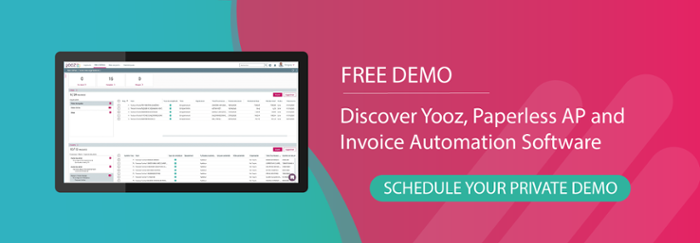Why the accounts payable function is a strategic asset to weather uncertain times
By Cody Manning, VP Sales North America, Yooz Inc.
By all accounts, 2020 was a rough year. Supply chains were rattled or disrupted, containers stuck in ports or offshore, offices shuttered with an uncertain path to reopening, and vendors on the brink of serious cash flow problems as bills went unpaid.
No wonder that one in two finance leaders in the US and abroad we surveyed in the spring of 2021 told us that the pandemic has significantly affected their business operations and, even worse, expect that it will take at least a year or longer to recover.
Market researcher Ardent Partners paints a very similar picture in its sixteenth annual “State of ePayables Report.” Only 5% of companies they polled said they experienced little to no adverse effects due to COVID. The vast majority of enterprises had and to some extent still are, grappling with “larger supply chain disruptions and extreme revenue shortfalls.”
The new normal, then, means that unexpected shocks are here to stay. Supply chain managers and finance leaders in companies of every size and every industry have to find a way forward to ensure their businesses run as smoothly as possible. That goes beyond making sure inventory is replenished and reliable staffing levels are maintained.
The finance function, particularly how and how fast invoices are paid, can make a key difference for staying in business and staying competitive. If the pandemic made one thing clear, it’s the fact that the accounts payable team is no longer a cost center or an afterthought tucked away in the back office. Instead, the crisis has made it a player of strategic importance that can contribute to the bottom line and ensure business continuity on many levels.
That’s because the AP department is in a unique position to gather and generate actionable financial intelligence for the entire organization, from the moment a purchase order is issued until payment is initiated. Digital transformation and automation are the key drivers when it comes to future-proofing companies. Going paperless with an intelligent platform that requires little to no human intervention not only saves valuable time and money. It’s also key to improve vendor relationships and optimize cash management.
Ardent’s analysts lay out the competitive advantages of purchase-to-pay (P2P) automation by diving into the key performance metrics of companies that have already automated their workflow end-to-end. At a high level, AP plays “a critical role in maintaining enterprise liquidity and keeping suppliers paid, even with the vast majority of employees working remotely or adopting a hybrid work environment.”
It literally pays to have a system up and running that can capture a PO or invoice the second it comes in, correctly GL-code it, route it for approval from anywhere, even a mobile device, finally trigger electronic payments and reconcile them with the ERP system. It does away with late payments, duplicates, outright fraud and keeps vendors happy as they are in the know, as well, and don’t have to get on the phone to hunt for the status of a missing payment. In other words, every single PO and invoice should be treated as a valuable bit of your business intelligence ops and as an integral part of keeping your supply chain running.
According to Ardent, the benefits of an automated P2P workflow are substantial. Companies that have implemented a best-in-class solution get more and better data, they have fewer humans touchless paper and deal with fewer paper invoices, which are an inherent source of errors, fraud and delays.
Going digital means cutting the cost to process a single invoice from $10.95 to just $2.25, an 80% savings, while cycle time per invoice drops from almost 12 to 3.3 days. At the same time, the exception rate decreases from one in four to now one in ten invoices. What’s more, staff time dealing with vendor inquiries is cut in half, and the share of suppliers submitting invoices electronically doubles, from one-third to almost two-thirds.
Supplier portals in the cloud play a particular role here, Ardent points out, as they are like “windows to the world” that enable global vendors to transact and communicate with their customers across the entire P2P process. Such a dynamic business network that streamlines collaboration leads to greater speed, enhanced security and more savings. That’s due to the fact that happy suppliers are more open to negotiate favorable terms and can prioritize shipments to those customers who keep them in the loop and pay on time or even early.
Over time -- PO by PO and invoice by invoice -- a company that has embraced P2P automation accumulates a treasure trove of data that benefits the entire organization, from product development over procurement to sales. It’s the kind of financial intelligence that gives everyone the right signals at the right time.
Done right, P2P automation helps the accounts payable function become a true value driver, or in Ardent’s words, turning it into “a self-sustaining engine of intelligence and operational prowess, ready to support strategic enterprise endeavors while serving as a source of financial knowledge that can impact heavy, mission-critical corporate decision-making.”







